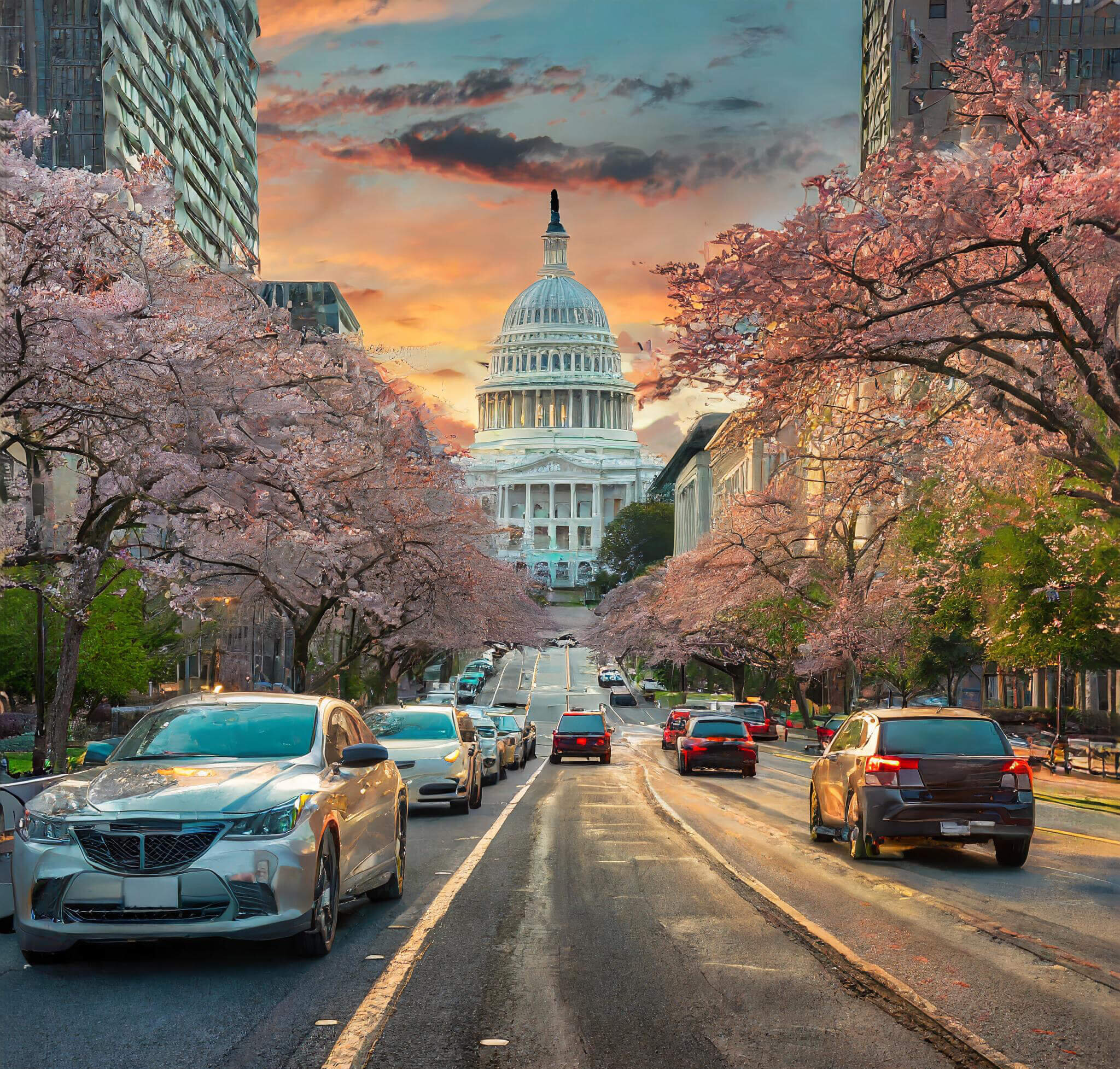Technology and Pedestrian Safety in DC
Technology seems to enhance, for the most part, every aspect of our life. It makes things far quicker, allows us to communicate with people across the globe, access an infinite wealth of information, and makes many things safer than ever. But what about technology and pedestrian safety in DC? In 1968, seatbelts became mandated across the United States. Since then, we have seen enhancements in safety technology in cars that continue to evolve even today. Accordingly, while cars continue to get faster, the people in those cars are still the safest they have been. Unfortunately, the same is not true for pedestrians. As a result, pedestrian accidents continue to be the deadliest type of accidents we handle as personal injury attorneys.
But that does not mean the technology affecting pedestrians has gone unchanged. Fortunately, DC is not the experimental playground like other parts of the country that host autonomous vehicles for research purposes. Here, we will explore the latest advancements in pedestrian technology impacting downtown Washington, D.C. While the newest innovations in pedestrian safety technology have not made the same strides that other forms of technology have, we hope that it continues to improve as safety should be paramount in the District.
Emerging Technologies Enhancing Pedestrian Safety in DC
Many of the emerging technologies enhancing pedestrian safety in DC are grounded in existing technology. It would be difficult to convince pedestrians to wear technology solely to protect them against traffic-related accidents. Thus, to improve pedestrian safety, innovators must utilize preexisting technology.
V2X Communication for Pedestrian Safety in DC
While this appears complicated at first glance, V2X stands for “vehicle-to-everything communication.” The goal of V2X is to improve road safety, not just for pedestrians but also for vehicles. These vehicles can communicate through several different means. If you have a phone in your pocket, they can communicate with that via cellular networks or WiFi. Vehicles can also communicate with varying technologies via radio frequencies. At some point, if you are wearing a smartwatch, for example, a rapidly approaching vehicle may signal to your watch that it is quickly approaching you if it is connected to the internet. Cars already have this technology and will use it to signal the driver to stop immediately. However, the technology has yet to be utilized to warn pedestrians.
Approaching the issue of a rapidly approaching vehicle from both ends of the collision may further decrease future accidents as it can warn an unsuspecting pedestrian, perhaps in a crosswalk, to jump out of the way. This technology can also be used to warn drivers of blind spots. Blind spots for mirrors are responsible for an unfortunate share of pedestrian accidents. While this technology is still under development, it can be a game-changer for pedestrian safety in Washington, D.C.
Smart Crosswalks
Smart crosswalks also have the potential to be a game-changer for pedestrian safety in DC. As discussed above, pedestrians are unlikely to wear anything for safety on the sidewalk. Thus, agencies vested in protecting pedestrians must get creative in protecting the city. Smart crosswalks are one way to do so. Crosswalks are equipped with sensors and cameras to improve safety and traffic flow. Whether it is radar, lidar, or video cameras, these smart crosswalks can detect pedestrians waiting to cross; this improves on the old technology of pedestrians having to push the button. These smart crosswalks can now know how many pedestrians are waiting at a light and adjust the traffic signals accordingly. But how do they protect pedestrians?
The biggest threat to pedestrians in crosswalks remains cars and trucks. The first way to combat that threat is by increasing visibility. Smart crosswalks use brighter LED lights and in-pavement warning lights that illuminate when a pedestrian is crossing and indicate precisely where the stop line is. Hence, vehicles know not to come even close to pedestrians. In very advanced systems, an intelligent crosswalk can communicate via V2X communication to a car to alert the driver when approaching a crosswalk with pedestrians too quickly. Unfortunately, safety technology is still at the stage in which it is ultimately up to the driver to be alert and stop the car before it is too late.
Impact of Autonomous Vehicles on Pedestrian Safety

There are both advantages and disadvantages at the current stage of autonomous vehicles.
Advantages
There are some significant advantages to consider. First, traffic will flow far faster. Humans can only react to other drivers’ behaviors in real time. If a human tries to anticipate a driver’s next move, they could easily be wrong and cause an accident. Thus, a prudent driver waits about a second for the car before him to drive before accelerating. This lag time is eliminated with autonomous vehicles. The same can be applied to pedestrian safety. There is no lag time for a driver having to stop when he sees a pedestrian.
Disadvantages
At this stage, autonomous vehicles are far from perfect. While that is not to say that humans are perfect, as they are far from it, autonomous vehicles make mistakes that most humans would know to avoid. This may occur based on how a pedestrian is acting on the sidewalk. It may be apparent to a human as they are signaling to their friend across the street that they are about to jaywalk, while this would not be clear to an autonomous vehicle. Moreover, humans can tell when other humans are drunk. We know that drunk people can be unpredictable and to drive carefully if they are on the sidewalk and near the road. While an autonomous vehicle will notice the pedestrian on the sidewalk, they will not know that they are behaving drunkenly or how to act in that circumstance.
There are also unpredictable environments that autonomous vehicles do not handle as well as humans in 2024. Plenty of road markings in DC are painted over one another. This may lead to confusion about artificial intelligence when deciding where it is meant to go. The same may be true for road work.
Infrastructure Improvements for Pedestrian Safety in DC
Sometimes, technology for pedestrian safety in DC can be as simple as crossing guards during peak accident times such as late afternoon rush hour. Washington, D.C., already does this at random times, but the presence of crossing guards at busy intersections has the capacity to cut down on pedestrian accidents every day. Too many drivers, either trying to get home or to make their next meeting, rush through traffic lights a second or two past when it turns red. This is dangerous in that it puts other drivers at risk. However, it also places pedestrians legally walking when they have a pedestrian walk sign at risk and are in the confines of a crosswalk at risk. A loud crossing guard may inhibit the drivers enough not to run these lights and endanger pedestrians.
Contact an Attorney
Contact our office today if you have questions regarding technology and pedestrian safety in DC. If you have been in a pedestrian accident in the District, we offer free consultations and only take a fee if we win. Our phone lines are open 24/7 at (202) 331-7227.

 N/a
N/a













